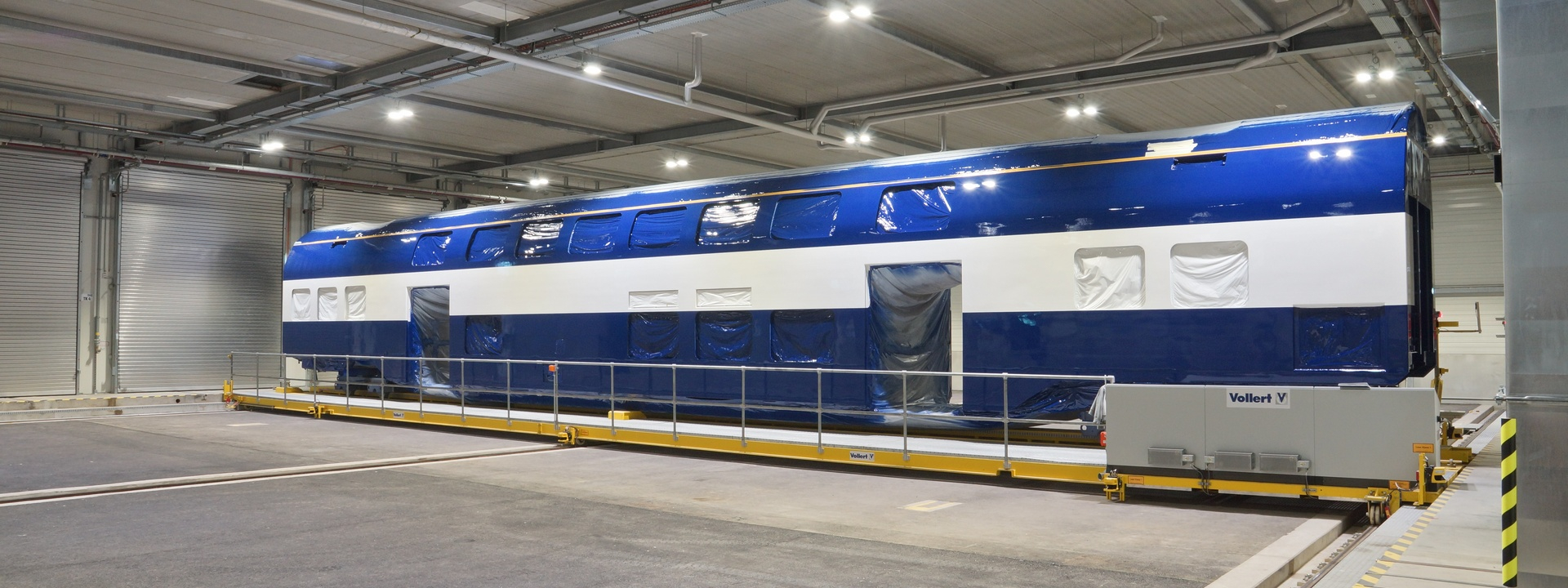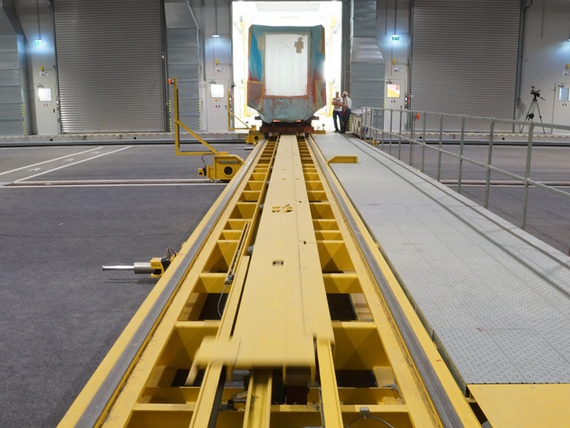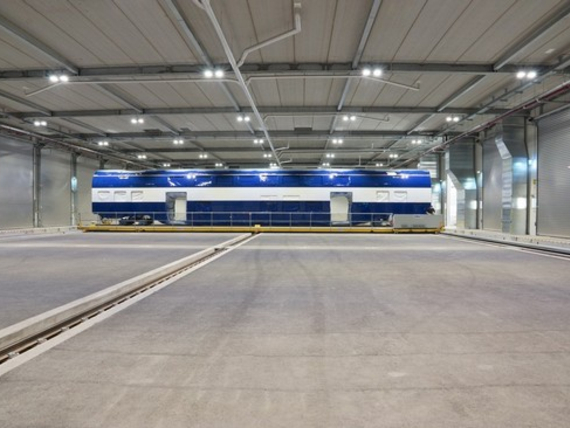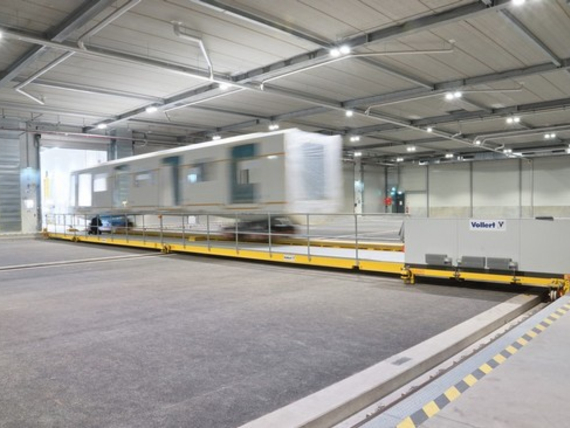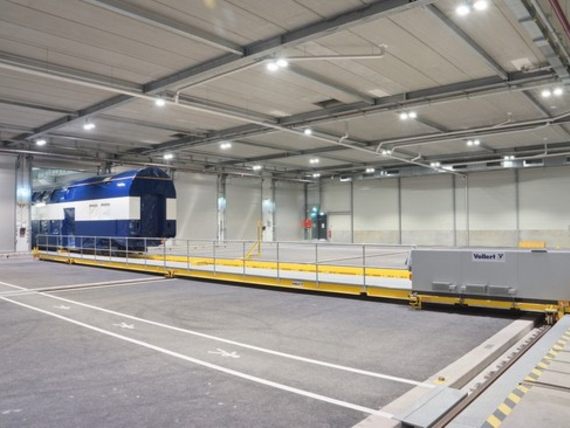Since April, rail vehicles have been coated in a new coating center at Siemens AG Austria's facility in Simmering/Vienna. The area of around 8,000 m2 can accommodate 17 coating treatment booths and one blast room. For the first time in Europe, painting robots are used for coating railway carriages using water-based paints. The newly developed booth technology comes from SLF Oberflächentechnik, who supplies painting robots by b + m surface systems. As a main contractor, Siemens coordinated the entire project. Metros for the cities of Vienna, Munich and Warsaw, as well as carriages for the Russian and Czech railways and double-deck carriages for Switzerland will be coated here. The automatic transport system and central connecting part between the booths form a mobile transfer table by Vollert Anlagenbau. It can move the carriages up and down on both sides, so that the different processing stations could be arranged parallel to the transfer table on both sides. Apart from the safe automatically controlled retraction and extension of the rail vehicles at the workstations, a compact and highly flexible system layout was also designed.
Independent transport in automatic mode
The carriage transfer table of 27.5 m wide and 6 m in length serves as a travel distance of 90 m, and can accommodate components of up to 20 t. The speed is infinitely variable up to 0.8 m/s. Absolute encoders mounted on both sides of the pit wall ensure the synchronization of the two 5.5 kW drives. Data is transmitted via the optical data transceiver over the entire distance. After delivery from the shell, the correct "recipe" for coating is assigned to the carriage at the main control panel. This determines flow path, or rather the sequence of the individual processing stations, through which the components must pass. The transfer table then operates in automatic mode and moves the carriages independently to the booths. In the case of equivalent, multiple workstations, the control unit decides independently on the distribution. In total, there are two fully air-conditioned robot booths, two manual painting booths, five drying and preparation stations as well as three cement booths and a blast room.
Control and visualization in the control room
The entire system can be viewed from the control room. The plant operators can thus continuously follow every production step. A self-contained video system with four cameras on the transfer table provides a live camera feed for monitoring the loading and offloading of carriages in the booths. The transfer table is positioned in front of the working station after which the roller door opens. The operator in the control center checks whether there are people or objects in the booths via the live camera feed and releases the work area. Afterwards, the components are automatically moved into the booth by a push carriage located on the transfer table. "Positioning is done using very tight tolerances, which is particularly important for robot painting," explains Dieter Schnell, Vollert's project manager. The pushing car, which is about 27 m long, also called a Pusher, grabs on the auxiliary trolleys of the carriage and drives them to the working booth at a speed of 0.2 m/s. For explosion protection, the feed uses friction wheels mounted only on the sliding platform and thus outside the working booths.
If there are no personnel in the booth, the roller shutter is closed again and work on the carriage can take place. After completion, the workers leave this step. The transfer table then unloads the carriage independently and moves it to the next booth. For manual operation, the system is also equipped with a radio remote control and an on-board control system on the transport platform.
People's safety first
Despite the high degree of automation of the coating center, the area is not closed off to people. "In plants where large components are painted, workers are almost always involved," says Dieter Schnell. "Therefore, pathway safety systems and workplaces must be reliable and secure. At Siemens in Vienna, three passenger crossings cross the path of the transfer table. "In total, 10 safety scanners on the transfer table scan the pathway for obstacles. If the obstacles are within the defined warning range, the control initially reduces speed, and emits optical and acoustic warning signals. If the obstacles appear in the protected area, the transport platform immediately goes into emergency stop mode. In addition to the video systems, two ultrasound systems check both sides of a workstation to see whether it is occupied, if necessary.
High flexibility, technological advantage
With its new coating center, Siemens Austria takes the technological lead in coating carriages. The entire engineering of the booths and conveyor system are designed for high quality of products and energy efficiency. The newly developed coating technology in combination with the central automatic transfer table, which allows two-sided arrangement and operation of the work booths and thus an efficient and flexible system layout, is unique to Europe.

